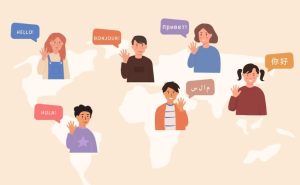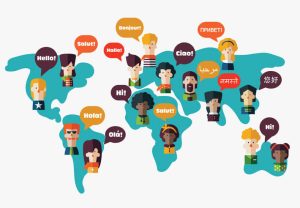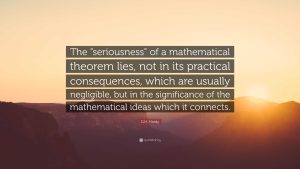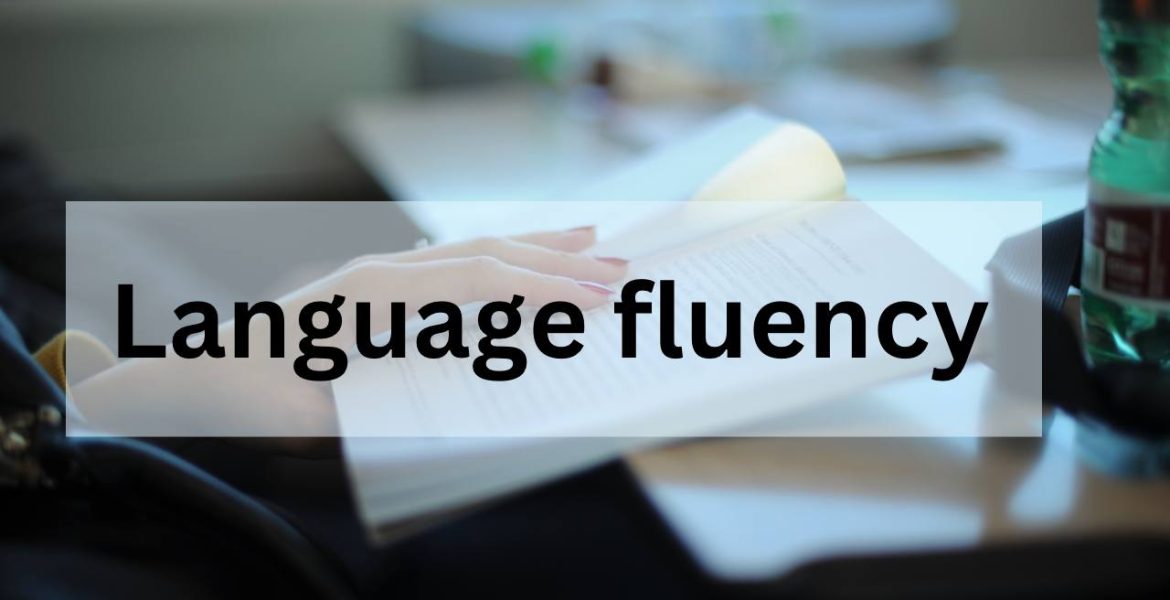?Language fluency – the ideal or an illusion
1402-05-14 1402-08-02 23:39?Language fluency – the ideal or an illusion
(ویژه سومین کنفرانس چند زبانههای ایران )
When thinking and speaking of language and language learning, fluency is always an occurring and important point considered. It is thought of as an ideal and a goal, a must if you may when acquiring and learning a language. Although fluency is thought of and divided into different levels, for instance, systematized in the levels of A1-C2, this is a very stable and passive perception of fluency and language in general.
Mainly because it is a perception that entails fluency being the ideal of language and language learning, namely an attainable and measurable end goal manifested in for instance the level of C2. Although these levels occasionally can help the process of language learning, I will however argue that this is a false and misunderstood perception of fluency and language, as they are only a tool and not the goal or ideal.

Language, and thus fluency, is not measurable by for instance the number of words one knows, sentences one can construct and write, or which constructed level one is at. Rather, language is substantially thought. When speaking, listening, reading, and writing, one thinks through and with language(s). Furthermore, it is known, which I can confirm as an anthropologist, that language is social, in that it is a communication tool and relationship establisher and builder. These two features mean that language is not a static and stable quantity, and thus not measurable, for instance in terms of different constructed levels. Consequently, this also regards fluency.
Therefore, I further argue that fluency is not, and should not be, an ideal, but is rather an idea. I would go one step further and argue that it is an illusion, an indefinable and mythical illusion, as there is not one single answer, if any, to the question regarding what language fluency is, and thus not how to attain it.
?What is “fluency”

Before moving on, let us take a step back and look at the word “fluency” for further clarity. Overall, it has two meanings or aspects, which one could argue are the same, if not at least overlapping.
However, I will maintain a separation between the two, both analytically and practically. First, it means ability or coherence. I believe this is the meaning most people associate with language fluency. Namely, having the ability or being coherent concerning understanding and expressing oneself in a language. Although I to a certain extent agree with this perception, there is also a risk of misconception at work here, which is that ability and coherence are and should not be mistaken for wholeness and completeness. In other words, this meaning of “fluency” does not imply completeness concerning, in this case, language.
Another misconception is the emphasis on the meaning of “fluency” as opposed to its other meaning, being flow or smoothness. I argue that this meaning is more important and more accurate regarding language learning, language fluency, and language in general. The main reason for this is the important social aspect of language and fluency, which coerces change and transformation in language, including use and understanding.
Language fluency, fluent language

Based on the above, I believe that the concept of language fluency is a distortion of the fact that language itself is fluent. Primarily through its, as mentioned, social aspect, language is alive and has creative dimensions. This implies that language, and thus fluency, changes, transforms, and evolves. It is never static and is therefore not, as mentioned, a quantity nor measurable. For example, every year several hundred new words are officially added to the Danish Dictionary, thereby the modern Danish language and my mother tongue, while some words are written out. Additionally, the grammar rules have changed so that for instance nouns since 1948 no longer are written with capital letters as seen in the related German language.
The Danish language has thus slowly changed and evolved, and is further slowly changing and evolving, as Danish today is not what it was 50 or 100 years ago, nor will it be the same in another 50 or 100 years from now. This shows how languages themselves are fluent by being determined, created, and changed by human beings through their natural sociality and need for communication. Based on this, I thus argue that being “fluent” in a language primarily means and requires flowing with the language.
Put differently, although one is coherent in a language, for instance, one’s native language, there is always room for and even a need to improve and expand one’s ability and coherence in that language. Figuratively speaking, languages are like the ocean; vast, deep, and hold endless opportunities, but in order not to drown, you need to flow with it. Following this, by flowing, languages can take you places, where you may explore new corners and parts of languages.
For instance, you may find that to engage in and express yourself in relation to a new topic, you must expand your language, like learning new vocabulary, even in your native language. This example thus shows how the common (mis)understanding of fluency as completeness is an illusion. Flowing with languages, on the other hand, shows how languages, like the human mind and this world, are a never-ending site of exploration. Additionally, flowing equals ease and requires attentiveness and flexibility, which I believe, concerning languages and language learning, are more desirable, effective, and realistic attributes than for instance completeness.
Its practical consequences

With this conceptualization, one consequently has a more open approach to language and language learning as there is no limit and no minimum. This should motivate, especially language learners, to not give up and to learn more when studying and acquiring a language or languages. One may, on the other hand, argue that you then never will know what level you are at or how well you truly know a particular language, which could be demotivating.
First, as mentioned above, I do believe that there is some degree of measurement present concerning language learning and “fluency”. For instance, there is of course a difference between a person who has studied Italian for three months and a native Italian speaker. Furthermore, when seriously and consecutively studying and learning a language one will naturally develop and recognize this progress when getting to know the language more and more.
However, my point is that, in this progress or process, there do not exist predetermined and stable levels to be at or to aim for, although levels A1-C2 occasionally can be used as a tool. Language is rather fluent and open, providing freedom and creativity, which I believe language learners, as well as language lovers and enthusiasts, should be grateful for and comfortable in. Therefore, instead of striving for language fluency, one should strive for fluency in language (learning).
Practically, this means that one should relax and be creative with language. Of course, there are barriers, as not all creativity when using language will entail making sense and being understood, which ultimately is the salient point of languages. However, playing and fearlessly trying to express oneself in a language, like children, will help you build a better relationship, both with languages and people.
On the other hand, this does not, as mentioned, only refer to the language(s) one is learning but one’s native language as well. Flowing with language(s) will remind us that we must be open as we always can and should learn more, especially from learners of languages we feel comfortable in. This will make us able to reflect on for instance our word choices and sentence constructions, which in effect will make us able to express ourselves, our thoughts, and feelings more nuanced.
Ultimately, how we communicate, use, and understand languages, not only develops languages, but also influences our surroundings, society, and its people.
Perfect imperfection – learning as a child
In sum, flowing with languages, therefore, means not locking ourselves in mentally and socially. For language learners, it specifically signifies not striving for perfection or the ideal of “fluency”, but rather being daring and having fun. Reconnect with your inner child, try to learn, and thereby make mistakes, like a child. Concerning language learning, children are often mentioned as an example and explanation to look towards. Although children learn languages the easiest and best in relation to for instance pronunciation and thus accent, it is a common myth that only children can learn languages.
However, you may learn from children by learning languages like children or with the mindset of children. For instance, children do not think of language “fluency”, perfection in pronunciation and sentence construction, nor what constructed level they are at. They use language as a communication tool to express and develop their thoughts, observations, feelings, and needs and socially interact with people. Therefore, although studying grammar and vocabulary and taking language tests can help learn a language, I believe learning, developing, and making mistakes like a child is more effective concerning particularly learning a language and generally understanding languages. By being perfectly imperfect, and thus flowing with languages, you will consequently understand and practice this conception of languages and fluency better, which will benefit you when you socially interact, communicate, and learn languages.
By: Sepideh Atter Motlagh

